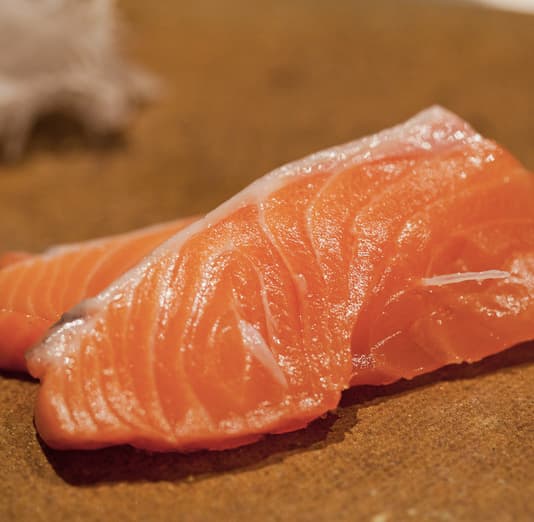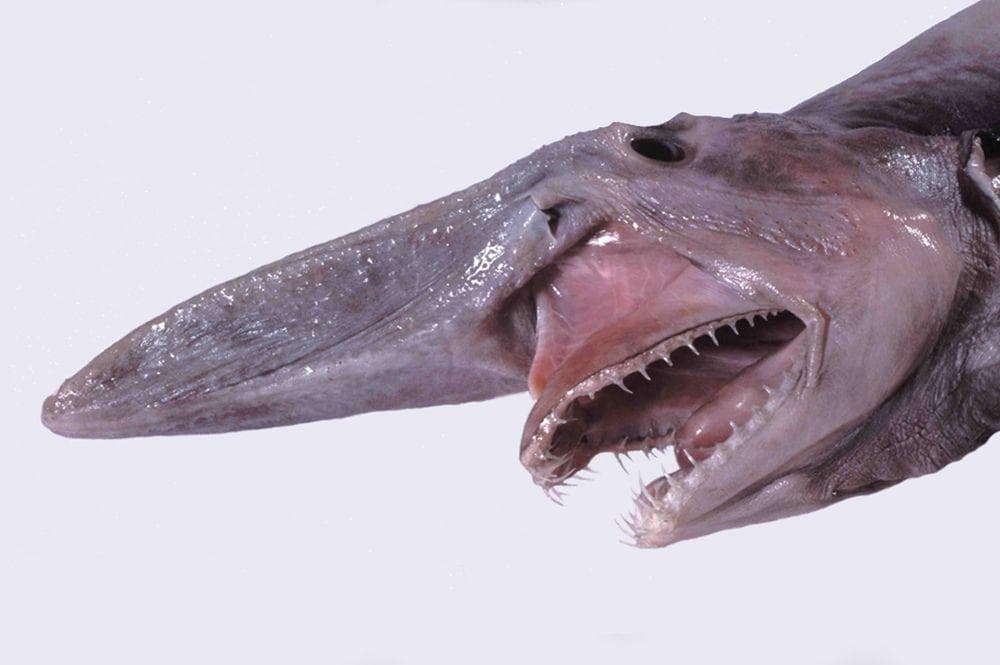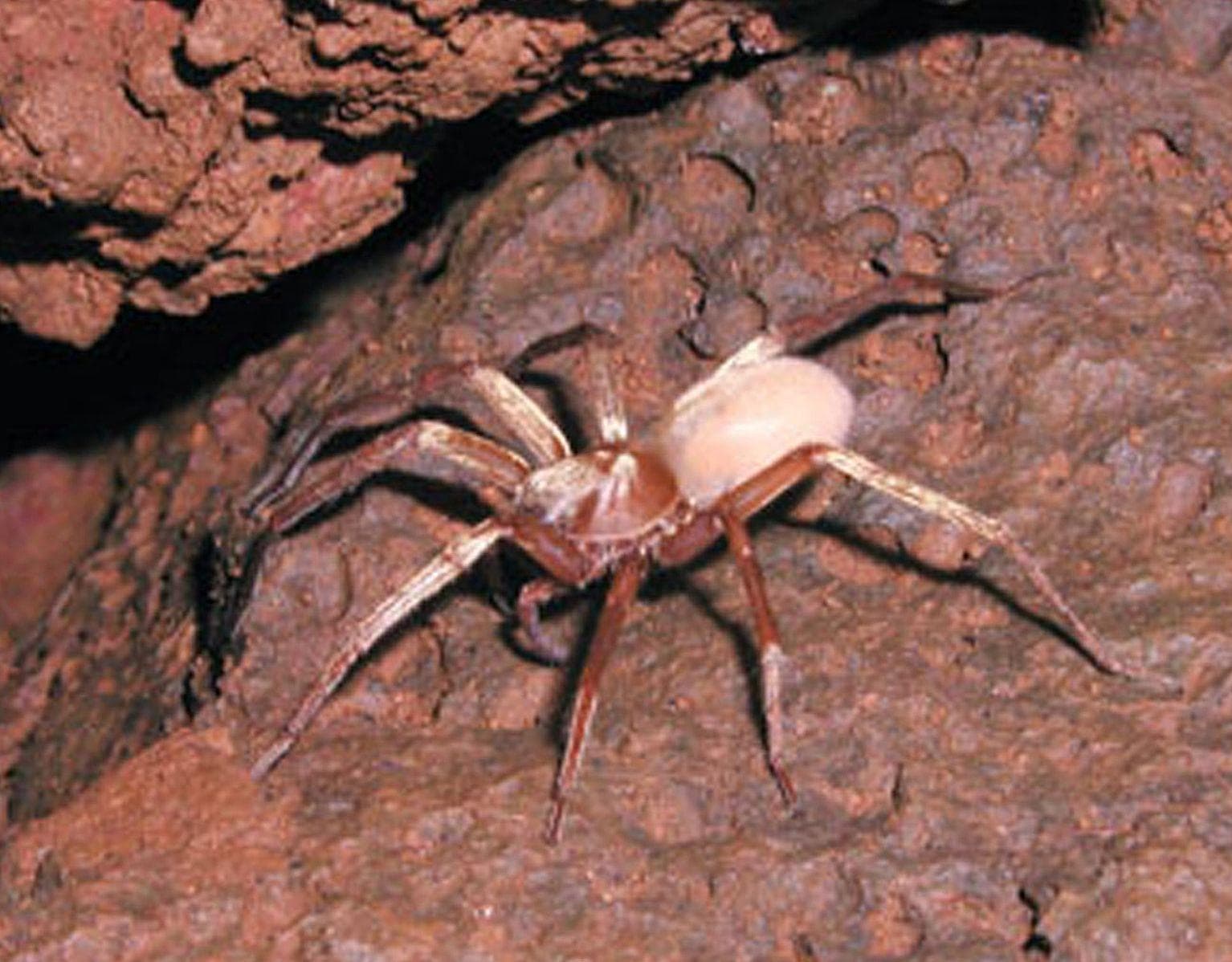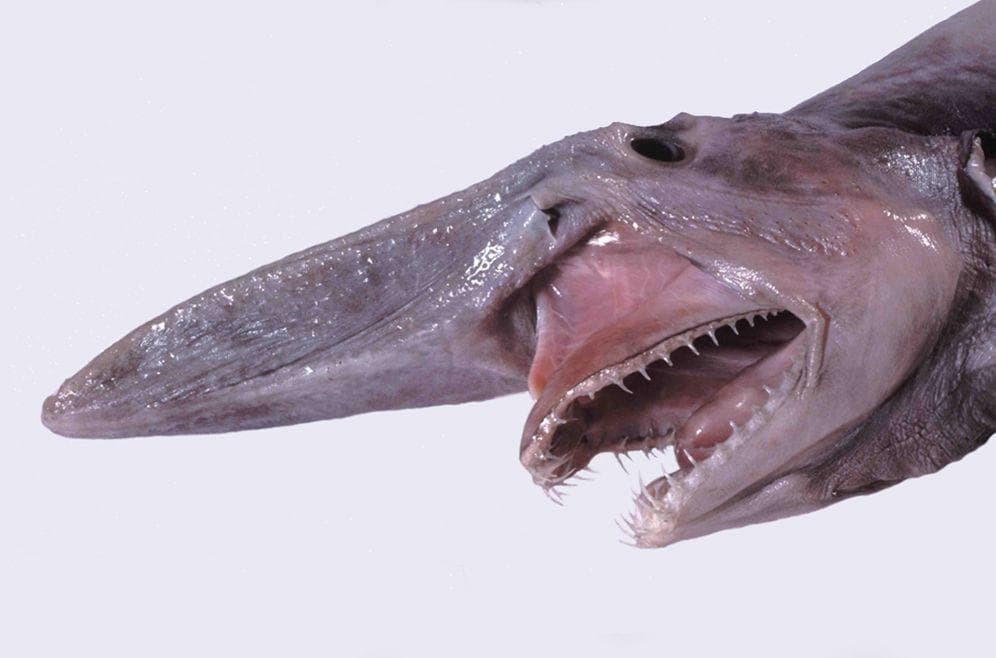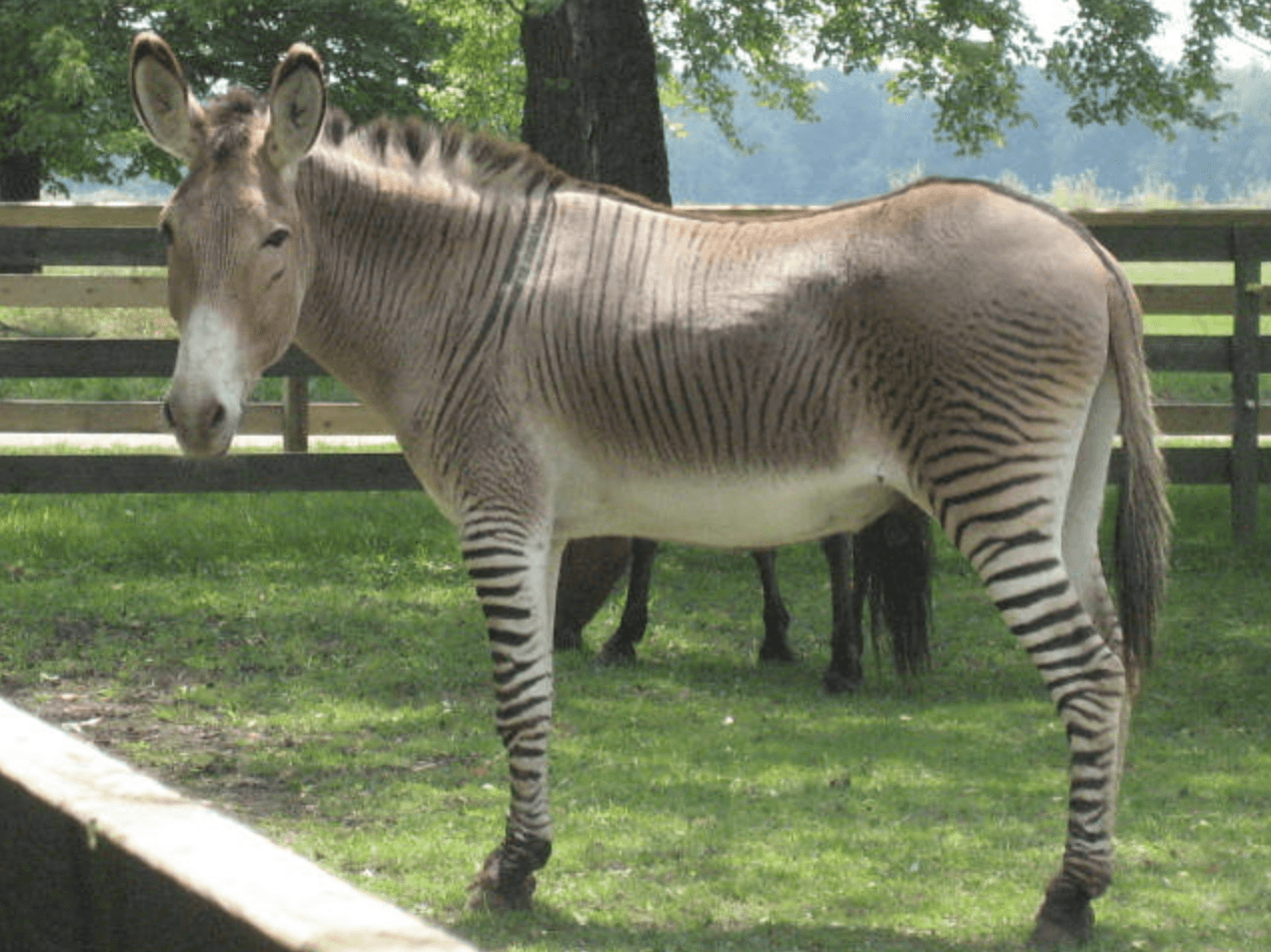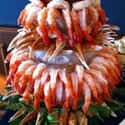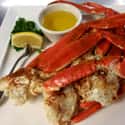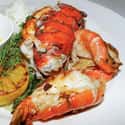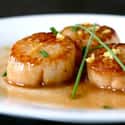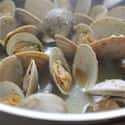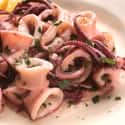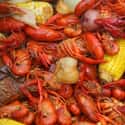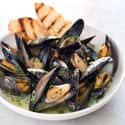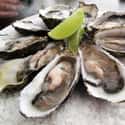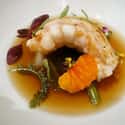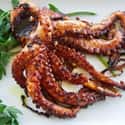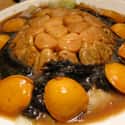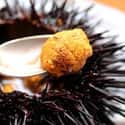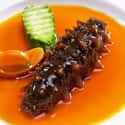-
(#1) Shrimp
Ways to Eat Them: Barbecued shrimp, boiled shrimp, broiled shrimp, baked shrimp, sautéed shrimp, shrimp kebabs, shrimp creole, shrimp gumbo, pan-fried shrimp, deep-fried shrimp, stir-fried shrimp, pineapple shrimp, lemon shrimp, coconut shrimp, pepper shrimp, shrimp soup, shrimp stew, shrimp salad, shrimp and potatoes, shrimp burger, shrimp sandwich, shrimp scampi, shrimp cocktail, maybe some others.
Pros: Highly accessible. Versatile. Easy to eat by the pound. Can also buy frozen. Can also call them "prawns" and then quote District 9 for a while.
Cons: Sometimes you have to pull off the head or shell yourself, like you have all day. Also, that dark line on the back of a shrimp is full of poop. -
(#2) Crab
Ways to Eat It: Steamed crab, lump crab, whole crab, crab legs, crab claws, crab cake, crab bisque, soft-shell crab, deep-fried crab, crab dip, crab soup, crab rangoon, etc.
Pros: Good hot or cold. Cracking and pulling tiny slivers of meat out of a crab carcass really feels like an accomplishment.
Cons: The sale of "lump crabmeat" is a scam. Also, crab bodies are very spiny and can really bloody up your fingers and knuckles if you are not careful.
Bonus: If you have a favorite kind of crab, an easy way to let the world know is to visit this list of the best crabs to eat. -
(#3) Lobster
Ways to Eat It: Steamed, boiled, grilled, whole or just-tail, lobster bisque, lobster roll ("Maine" style - chilled with some mayonnaise, or "Connecticut" style - warm with butter and lemon)
Pros: Fancy! Look at you!
Cons: Usually stupidly expensive, even though lobsters are the bugs of the sea and literally eat carrion. In fact, U.S. prisons used to serve lobster to inmates because the meat was so cheap and low-quality. (Wow, do you think this is interesting information? Then maybe you would like to read David Foster Wallace's essay about this very topic, Consider the Lobster.)
-
(#4) Scallop
Ways to Eat Them: Seared, smoked, other ways.
Pros: Sometimes it is a bunch of little scallops, and sometimes it is like one big scallop. You can buy packages of very small frozen ones at Trader Joe's.
Cons: All scallops have dozens of tiny, disgusting eyeballs, and they look like this. -
(#5) Clam
Ways to Eat Them: Steamed, baked, boiled, raw, fried, clam chowder (the red or the white), clambake, in pasta, in soup, in whatever else you want really.
Pros: They are pretty good in the shells and also out. Why don't you get some for the table?
Cons: If you don't like to chew gooey things or the taste of the sea, you will not like clams. -
(#6) Squid
Ways to Eat It: Grilled, sautéed, fried, cut into long pieces or rings, even just the legs alone by themselves.
Pros: Hey! Let's get some fried calamari! And then dip this squid in marinara sauce! This sea animal will taste just like an onion ring!!
Cons: Can you be sure that ring of squid meat isn't really just a ring of pig rectum?
-
(#7) Crayfish
Ways to Eat Them: Boiled crawfish, fried crawfish, crawfish étouffée, crawfish beignets (and all of those things said like "crayfish" or "crawdads" or even "crawdaddies"; the preferred nomenclature is regional.)
Pros: If you like seafood, Old Bay, eating outside, corn, little potatoes, beer, socializing, pulling the heads off of animals, and personal challenges to eat 100 of something, maybe a crawfish boil is right up your alley!
Cons: Sometimes, yellow goo comes out with the meat.
-
(#9) Oyster
Ways to Eat Them: Raw (on ice, with vinegar and/or lemon), grilled, smoked, steamed, baked, boiled, pickled, poached, fried, in a po' boy; usually by the half-dozen or whole dozen or 3 dozen.
Pros: Supposedly an aphrodisiac (but only because they look suggestive wink). Easy to share. Varieties from different places / bodies of water all taste different. Come in their own little shotglasses. You sort of swallow them whole, so chewing is not an issue.
Cons: Sometimes have actual sand in them. They look like placenta. -
(#10) Langoustine
Ways to Eat It: The same ways that you would eat a few very, very expensive shrimp.
Pros: Pale orange, narrow, and delicate, the langoustine is like a sexy little lobster.
Cons: The Latin name of this animal is Nephrops norvegicus, which means Norwegian kidney eye. Also, a May 2015 article in Bon Appetit magazine named langoustines "the new foie gras." Oh, brother. -
(#11) Octopus
Ways to Eat It: Grilled, fried, boiled, steamed, raw, roasted, hot, chilled, adult, baby, dead, or even alive!Pros: Great, how fun. It's a little octopus. There are its little suckers.
Cons: Real talk: Octopuses are really, really smart. In captivity, they have learned how to solve problems over time, remembered and interacted with favored human handlers, liked to be "pet," and even played with toys (rather than instinctively eaten or rejected them as food). Continued research shows that an octopus has cognition far beyond that of any other invertebrate - which might include knowing that it is being eaten alive. (A nice, fun book with lots of octopus science facts & anecdotes is The Soul of the Octopus by Sy Montgomery.)
-
(#12) Cuttlefish
Ways to Eat It: Pan-fried, poached, grilled, baked, cut into rings if you want - and the ink is commonly used in pasta and rice dishes.
Pros: Pretty much the same as a squid. Do you like squid?
Cons: Small, precarious, and full of ink, the cuttlefish (or "sepia") is messy and difficult to clean and cook, which means it is usually costs a little more.
Just for Fun: Here is full National Geographic documentary about cuttlefish camouflage. Go ahead, take a 53-minute break from your life to watch the show! -
(#13) Abalone
Ways to Eat It: Raw on sushi, steamed, boiled, breaded & fried, etc.
Pros: Considered a delicacy in many places on earth, which makes you a very lucky consumer.
Cons: Cooked abalone is usually fermented (i.e. way too salty) and can be rubbery. Raw, it is like sweet chewy fish. And let's be honest: it looks so gross. -
(#15) Sea cucumber
Ways to Eat It: Don't order it, immediately throw it away, pretend to be allergic, etc.
Pros: Great, now you can eat something else and not make people look at your sea cucumber during dinner.
Cons: You have already made everyone sick just by bringing it up. We are all trying to enjoy ourselves here. Please shape up or ship out.
New Random Displays Display All By Ranking
About This Tool
The definition of seafood can be considered basic, as long as it is produced in the Sea of edible animal, or plant-based raw materials generally known as seafood. Among them, shellfish (clams, scallops, etc.) and arthropods (shrimps, crabs, etc.) contain relatively high levels of purines, and seafood such as beer drinking and eating is more likely to suffer from gout. Hainan is blessed with a unique marine ecological environment, and its seawater is pollution-free and clean, Sanya seafood is famous for its “fresh and delicious, various kinds and natural health”.
The random tool generated 15 items, featuring 15 seafood species (not including fish) that are common or commonly eaten in our daily lives, including Shrimp, Crab, Lobster, Scallop, Clam, etc.
Our data comes from Ranker, If you want to participate in the ranking of items displayed on this page, please click here.

